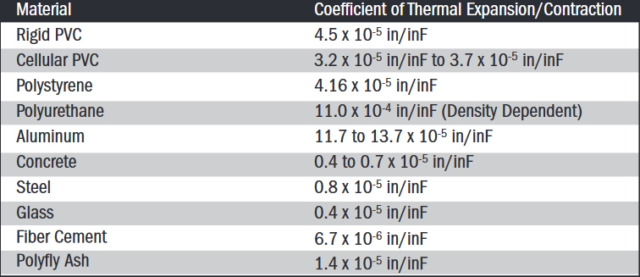Download our Thermal Properties documents:
Heat Transfer Rates (R & U Values)
The two most common units used to evaluate the thermal properties of a material are U-value and R-value. The U-value is
defined as the amount of conductive heat energy (BTU’s) transferred through a one square foot area for each one (1) degree
temperature difference between the indoor and outdoor air. Units are BTU/hr/ft2/degree F. The lower the number the better
the insulator.
The R-value is just a different way of evaluating the thermal properties of a material. The R-value is the reciprocal of the
U-value. R measures the ability of a given material (barrier) to resist the transfer of heat through a one square foot area for
each one (1) degree temperature difference. Units are Hr/ft2/degree F/BTU. Both units are per inch of thickness. The higher the number the better the insulator.

Density, moisture content, etc. can have an effect on the U and R values shown above.
As illustrated in the table above, cellular PVC is a better insulator than white pine or rigid PVC (i.e. vinyl siding). Also, the lower the density of the material the better the insulator. A lower density means more trapped air pockets within the core ofthe PVC board or sheet, which in themselves, are good insulators.
Thermal Expansion and Contraction
VERSATEX is a cellular PVC (thermoplastic) product that will expand when heated and contract or shrink when cooled. The
amount of movement is dependent on the coefficient of thermal expansion/contraction of the material. The coefficient of
linear thermal expansion (CLTE) of any material is the change in the material’s length and to a much lesser degree the width
or thickness per unit change in temperature. Thermal coefficient values for cellular PVC and other building products are as follows:

It is important to take into consideration the environmental conditions when installing VERSATEX.
Heat Deflection/Distortion Value
VERSATEX should not be used in areas where a service temperature of 150°F may be reached. 150°F is equal to or
greater than the heat distortion or heat deflection temperature (HDT) of most if not all cellular PVC. The HDT is a measure
of a polymer’s resistance to distortion under a given load at elevated temperatures or the temperature where the material
starts to deform. Conventional rigid polyvinyl chloride has a HDT of approximately 160°F, while for most PVC cellular trims
this value ranges from 145°F to 150°F. The common ASTM test to determine the heat deflection temperature of PVC
or other plastic product is ASTM D 648. ASTM defines deflection temperature as the temperature at which a test bar,
loaded to the specified bending stress, deflects by 0.010 inch (0.25 mm). The results obtained from this test are a
useful measure of relative service temperatures for a polymer when used in load-bearing parts. However, the distortion/
deflection temperature test is a short-term test and should not be used alone for product design. Other factors such as
the time of exposure to elevated temperature, the rate of temperature increase, and the part geometry all affect the
performance of a particular PVC cellular product. If the service temperature is reached, the PVC trim may soften or
distort. Using paints with a light reflectance value of 55 units or greater or true IR heat reflective paints will help prevent PVC boards or sheet from reaching their heat distortion value.